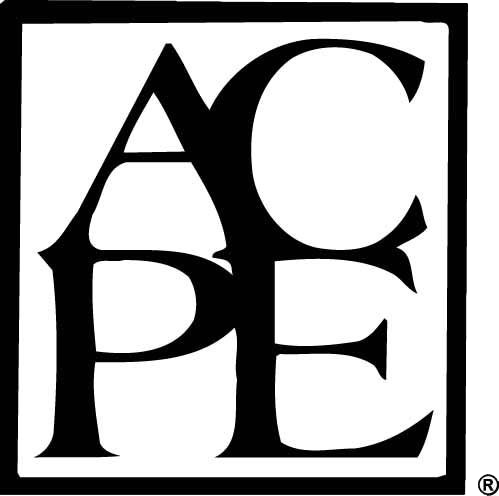
In this comprehensive 30.5 hour CPE credit activity, pharmacists, and pharmacy technicians (and any other interested healthcare providers) will learn the concepts and mechanics of medical writing from continuing education activities to policy writing to medical marketing. A Practice-based Certificate of Achievement will be awarded to those who have completed the pre-requisites and all phases of this practice-based certificate program 0009-0000-20-076-B04-P and 0009-0000-20-076-B04-T.
Learning Objectives for Pharmacists and Technicians:
At the completion of this activity, the participant will be able to:
• Demonstrate the ability to apply the principles of good writing to common documents used in pharmacy, medicine, regulatory writing
• List specific approaches needed for various types of medical writing
• Write a variety of documents pertaining to medicine and pharmacy, including continuing education activities, slide kits, and scholarly works
• Assemble a portfolio of writing pieces that demonstrate the learner’s areas of expertise
See below to see all of the activities and their learning objectives
To Register Click on Orange Registration Button above
| Activity | Learning Objectives | Number of Credit Hours |
| Introduction to Medical Writing | 0 | |
| 1. Fundamentals of Writing | -List the principles of good writing -Recognize common errors in one’s own and others’ writing -Apply Plain Language Guidelines -Analyze writing samples for error, readability, and flow |
3 |
| 2. References and Libraries | -Compare and contrast reference types -Select appropriate references -Identify copyright infringement pitfalls and how to avoid them -Compose AMA citations for common reference types |
2 |
| 3. Working with Clients | -Describe clients’ typical expectations from medical writers -List the necessary components in an LOA or contract -Contrast clients expectations with one’s own strengths and limitations -Complete an analysis of one’s readiness to pursue medical writing |
0.75 |
| 4. Developing Visuals |
-Discuss when it may be appropriate to add visual aids into your writing -List the basic components needed for constructing tables and figures -Given information, construct a suitable table or figure |
1 |
| 5. Scholarly Works | -Outline the various types of scholarly publications -Recall the key sections of scholarly manuscripts -Identify and consult journal specific “Authors’ Guide” throughout the writing process -Demonstrate ability to effectively peer review a manuscript |
2 |
| 6. Continuing Pharmacy & Medical Education | -Discuss the purpose of quality continuing education -Describe the elements of a good needs assessment proposal to obtain funding for continuing education -Recognize the medical writer’s role in continuing education development -Produce a 1200 word document with two learning objectives and three post-test questions that incorporates the principles taught here |
2 |
| 7. Short Pieces & Educational Materials |
-Recall available educational media platforms -Select a media platform tailored towards a specific audience -Describe the essential components of patient education brochures and professional posters -Evaluate the effectiveness of circulating patient education brochures and professional posters |
2 |
| 8. Powerful Presentations | -Identify the techniques necessary to create engaging presentations -Demonstrate the ability to construct slide decks and graph inserts properly -Differentiate high quality presentations from low quality presentations |
2 |
| 9. Communication | -Describe informative, succinct, and professional correspondence with attention to protected health information -Format professional documents of all types -Recall the elements of a concise invoice -Dissect customer complaints |
0.75 |
| 10. Research Documents | -Identify the purpose of the various research documents -List the different types of writing styles -Demonstrate the ability to reference relevant resources |
2 |
| 11. Regulatory Writing | -Describe the purpose of regulatory writing and its importance -Identify regulatory documents required for target products at various development stages -Use regulatory guidance to format and create proper documents -Define the internal review process |
1 |
| 12. Medical Marketing of Healthcare Products | -List the ways in which writing for medical marketing projects differs from other types of writing -Recall regulations that govern medical marketing -Identify requirements that most pharmaceutical companies insist upon |
1 |
| 13. Finding Employment | -List three ways to begin a search for medical writing jobs -Identify companies (or types of companies) that hire medical writers -Match your interests and abilities to suitable medical writing jobs |
0.5 |
| 14. Policy Writing |
-Define Standard Operating Procedure -Describe the components of the SCP document -Discuss the format and writing style |
0.5 |
| Submission of Writing Example (Final Project) | To complete the UConn Medical Writing Certificate Program, participants must produce a final project of approximately 5500 to 6000 word. Each participant will select a final project in collaboration with a UConn Medical Writing Certificate Program faculty member. The participant and the faculty members will select the type of assignment (e.g., needs assessment, continuing education activity homestudy, manuscript for submission to a journal), agree on a formal outline, and establish deadlines for draft and revision submissions. | 10 |
Activity Faculty
Kelsey Giara, PharmD
Medical Writer
Pelham, NH
Kelsey Fontneau Maytas, PharmD
CVS Pharmacy Manager
Shelton, CT
Sara Miller, PharmD
CVS Pharmacist
Franklin, MA
Bisni Narayanan, PharmD
Specialty Clinical Pharmacist
Yale New Haven Health
Hamden, CT
Stefanie Nigro, PharmD, BCACP, BC-ADM
Associate Clinical Professor
UConn School of Pharmacy
Storrs, CT
Paul Staffieri, PharmD
Clinical Manager
The Mount Sinai Hospital
New York, NY
Angela Su
PharmD Candidate 2024
University of Connecticut School of Pharmacy
Storrs, CT
Conner Walker, PharmD
Medical Writer
WriteAngle, Inc.
Torrington, CT
Jeannette Y. Wick, RPh, MBA
Director, Office of Pharmacy Professional Development and Visiting Instructor,
University of Connecticut School of Pharmacy, Storrs, CT
Faculty Disclosure
In accordance with the Accreditation Council for Pharmacy Education (ACPE) Criteria for Quality and Interpretive Guidelines, The University of Connecticut School of Pharmacy requires that faculty disclose any relationship that the faculty may have with commercial entities whose products or services may be mentioned in the activity.
None of the above listed faculty have a relationship with ineligible companies.
Acitivity Fees
General Registration– $1999.00
- Register above using the Orange Registration Button. Once registered a confirmation email with further details will be sent
Grant Funding
There is no grant funding for this activity.
Requirements for Successful Completion
For those wishing to receive CE Credit and ACPE Certificate of Achievement:
- Complete all of the required online modules and participate in the activities, including an evaluation of each activity within the HuskyCT system.
- Prepare and submit a “writing example”
- Complete and send in the Verification of Participation form found on the HuskyCT site, and submit to Heather Kleven at Heather.Kleven@uconn.edu
- Once all of the activities are complete, visit our online CE Center at https://pharmacyce.uconn.edu/login.php and complete the course evaluation to have your CE credits uploaded to the CPE Monitor system
 The University of Connecticut, School of Pharmacy, is accredited by the Accreditation Council for Pharmacy Education as a provider of continuing pharmacy education. Thirty and one half contact hours (3.05 CEU’s) will be awarded to pharmacists and pharmacy technicians who view the presentations, participate in the activities and complete the assignments and evaluations, and deliver their final submission. Statements of credit for ACPE UAN 0009-0000-23-057-B04-P/T will be automatically sent to CPE Monitor and can be printed from your CPE Monitor Profile. A Certificate of Achievement will be sent to those who complete all activities, evaluations and submit a complete Verification of Participation Form.
The University of Connecticut, School of Pharmacy, is accredited by the Accreditation Council for Pharmacy Education as a provider of continuing pharmacy education. Thirty and one half contact hours (3.05 CEU’s) will be awarded to pharmacists and pharmacy technicians who view the presentations, participate in the activities and complete the assignments and evaluations, and deliver their final submission. Statements of credit for ACPE UAN 0009-0000-23-057-B04-P/T will be automatically sent to CPE Monitor and can be printed from your CPE Monitor Profile. A Certificate of Achievement will be sent to those who complete all activities, evaluations and submit a complete Verification of Participation Form.
Initial release date: December 1, 2023
Planned expiration date: November 30, 2026
Disclaimer:
The material presented here does not necessarily reflect the views of The University of Connecticut School of Pharmacy or its co-sponsor affiliates. These materials may discuss uses and dosages for therapeutic products, processes, procedures and inferred diagnoses that have not been approved by the United States Food and Drug Administration. A qualified health care professional should be consulted before using any therapeutic product discussed. All readers and continuing education participants should verify all information and data before treating patients or employing any therapies described in this continuing education activity.